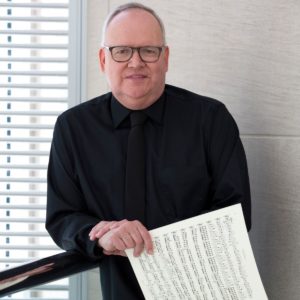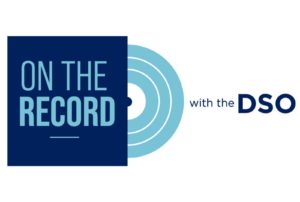On The Record – Mark Wilson
WITH SARAH KIENLE
Associate principal librarian Mark Wilson reflects on the memories of his favorite music and reveals the intricacies of working in an orchestra library.

THE BEATLES: ‚ÄúLady Madonna‚ÄĚ
‚ÄúThis one came out in the mid-60‚Äôs so I wasn‚Äôt quite ten yet, and I had three older brothers, all of them had bands‚Ķ I just remember going down this long staircase down to the basement and I‚Äôd sit there and I would stare through the banister at my brother and his band, and this is the piece that they were playing. There‚Äôs this lick in the left hand of the piano; it just was ingrained in my memory. We had this piano in the basement. It was this big, red, clunky piano, and I would go to the piano (I hadn‚Äôt started studying yet) and I would try and pick out the notes. I wasn‚Äôt very successful at it, but that was my goal.‚ÄĚ
CARLY SIMON: ‚ÄúThat‚Äôs The Way I‚Äôve Always Heard It Should Be‚ÄĚ from Carly Simon
“I’ve always loved her, and I love her story because she’s a very shy person. She comes from a musical family… but her sister was an opera singer as well, and all three of the girls sang, and she has incredible stage fright and so every time she performs I’m always amazed because her voice just seems so lovely…
When I was thirteen, my cousins who lived in California came back for a visit and I think they took pity on me because they probably realized, ‚Äėthis kid needs to get away from Long Island for a while‚Äô‚Ķ the four of us got into their Toyota station wagon and they took me back to California for about six weeks. Driving across country, we listened to the radio a lot, and for some reason this song came on a lot. Every time I hear it, I can still remember that drive and some of the things we saw‚Ķ it was beautiful‚ÄĚ
DEBUSSY: Préludes/ Book 1, L. 117: 10. La cathédrale engloutie
“[Debussy’s] works really speak to me, I have to say. Just seeing impressionistic paintings and then listening to Debussy and Ravel, those composers really investigated that genre very, very well…
It‚Äôs based on an ancient myth of a cathedral submerged under water. It rises up from the sea on clear mornings with the water is clear. Sounds can be heard of priests chanting, bells chiming, and the organ playing. Eventually, the cathedral sinks slowly back under the water and all you can hear in the distance are the bells ringing.‚ÄĚ
COPLAND: Appalachian Spring
‚ÄúFunnily enough, when I worked at Boosey and Hawkes, they were Copland‚Äôs publishers. I began to learn a lot about this piece, and learned that it was written initially as a commission by Martha Graham and Elizabeth Sprague Coolidge. They commissioned him in about the early 40‚Äôs to write a ballet based on an American theme. He didn‚Äôt really know what the ballet was going to be about, so he just titled it ‚ÄėBallet for Martha‚Äô and gave it to her. She did the choreography and then a little bit before the premiere, she suggested calling it ‚ÄėAppalachian Spring‚Äô because it was a phrase from a poem by Hart Crane called The Dance, and she particularly liked that phrase that mentions Appalachian Spring in it‚Ķ
It‚Äôs just beautiful. Copland uses these really wide chords so you have this sort of expansive sound. It‚Äôs just a gorgeous piece.‚ÄĚ
MAHLER: 5 R√ľckert-Lieder: IV. Ich bin der Welt abhanden gekommen
‚ÄúMahler himself was a person who dealt a lot with death and I think he chose poets to write music to their poetry that really supported that in him‚Ķ I think I became aware of it when maestro Eduardo Mata died. At his memorial service at the Meyerson, the Dallas Symphony played this piece and the soloist was someone that Maestro Mata had worked with a lot and I was just so taken with the beauty of it, and so I began to listen to other recordings of it‚Ķ I think with this song, the words, the music just supports it so well‚Ķ ‚ÄėI live alone in my heaven, in my love, in my song.‚Äô I don‚Äôt know if it gets better than that.‚ÄĚ
